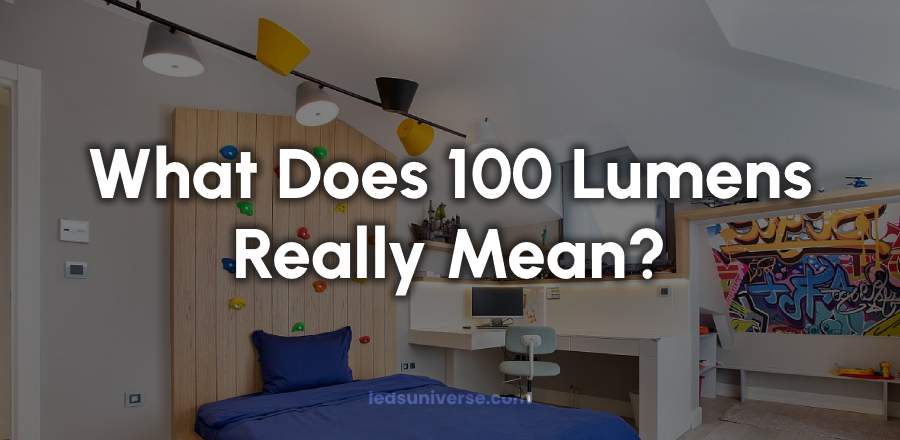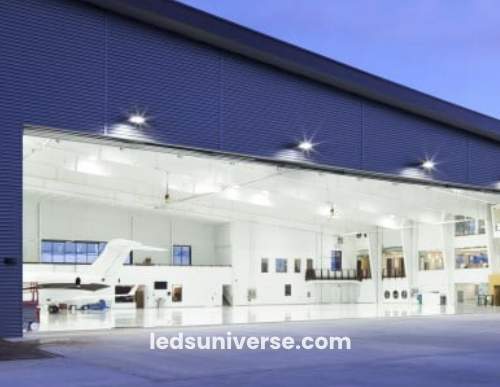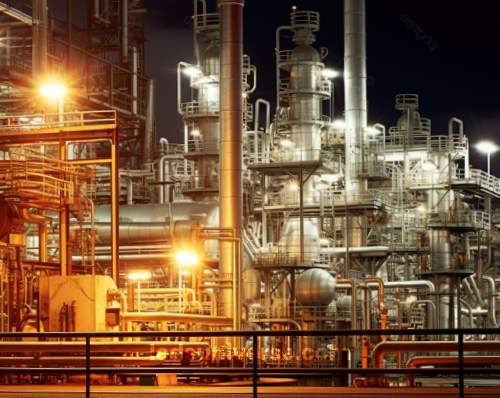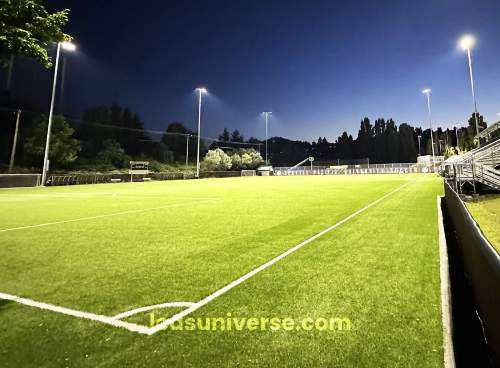
On this page, you’ll discover a wealth of valuable lighting knowledge and insights designed to help you make informed decisions when selecting the best lighting solutions for your specific venues. Whether you’re outfitting commercial spaces, industrial environments, or sports arenas, the information provided will guide you through the key factors to consider, ensuring that you choose lighting systems that enhance both functionality and ambiance.
Lighting is more than just a way to brighten a space—it shapes how we experience and interact with our surroundings. Whether it’s the inviting glow of a storefront, the powerful beams guiding workers in industrial settings, or the dazzling lights of a stadium on game night, the right lighting transforms environments. Each space requires a tailored approach, blending function with atmosphere. From energy-efficient commercial fixtures to heavy-duty lights built for rugged conditions, and precision-engineered sports lighting, the art of illumination is key to enhancing visibility, mood, and performance across diverse settings.
Reach out for free lighting consultation
Table of Contents
ToggleLighting plays a vital role in various environments, influencing visibility, ambiance, and functionality. Different settings require distinct lighting solutions, which can be categorized into commercial lighting, heavy-duty lighting, and sports lighting. Each type comes with its own set of characteristics and features that address specific needs.

Commercial lighting is designed primarily for workplaces, retail spaces, and public areas. Its main goal is to create an inviting atmosphere while ensuring optimal visibility for various tasks. The characteristics of commercial lighting include versatility, energy efficiency, and aesthetic appeal.
Fixtures in commercial spaces often utilize LED technology, which provides long-lasting illumination and reduces electricity costs. The flexibility in design allows for various fixture types such as recessed lights, pendant lights, and track lighting. Each of these fixtures can be strategically placed to achieve a uniform distribution of light, effectively eliminating harsh shadows and promoting a pleasing visual environment.
In commercial settings, the color temperature of the lighting is crucial, typically falling within the range of 3000K to 5000K. Warmer temperatures create a cozy environment suitable for retail, while cooler temperatures promote alertness in workspaces. Dimmable options are also beneficial, enabling adjustments according to the time of day or specific activities, thus enhancing both ambiance and functionality. By carefully selecting the lighting type and intensity, businesses can create spaces that foster productivity and customer satisfaction.

Heavy-duty lighting is specifically engineered for demanding environments such as industrial facilities, construction sites, and warehouses. This type of lighting needs to withstand various elements and conditions, making durability and resilience essential characteristics.
Heavy-duty fixtures are often constructed from robust materials to endure impacts, vibrations, and other stressors typical in such settings. This rugged construction ensures longevity, even under strenuous conditions. A key feature of heavy-duty lighting is its waterproof, dustproof, and heatproof properties, which guarantee reliable operation in extreme temperatures and harsh environments.
To provide adequate illumination over large areas, high lumen output is a necessity. This not only ensures safety and efficiency in work environments but also enhances overall visibility for workers. Many heavy-duty lights are rated with an IP (Ingress Protection) rating, indicating their resistance to dust and moisture, making them suitable for various industrial applications. Furthermore, the integration of LED technology in heavy-duty lighting offers energy efficiency and longevity, enabling continuous operation while minimizing energy costs.

Sports lighting is tailored specifically to illuminate athletic fields, stadiums, and arenas, ensuring optimal visibility for players, officials, and spectators alike. Brightness and uniformity are paramount, as uneven light distribution can impact performance and safety.
Sports lighting fixtures must deliver high luminous intensity while maintaining a consistent illumination level across the entire playing surface. This uniformity is critical for ensuring that players can perform without distractions caused by shadowy areas. Advanced lighting designs often employ multiple fixtures strategically placed around the field to achieve this goal.
High Color Rendering Index (CRI) is another essential aspect of sports lighting, as it ensures that colors appear true to life, aiding in player performance and enhancing audience enjoyment. These fixtures typically feature adjustable optics to focus light precisely where it is needed, minimizing glare and enhancing visibility. Moreover, many modern sports lighting systems incorporate advanced technologies, such as smart controls and energy-efficient LED sources, allowing for better management of light levels and reduced operational costs. The ability to withstand outdoor conditions is also crucial, making weather-resistant and durable materials standard features in sports lighting designs.
Choosing the right lighting for various spaces and activities is essential for creating an effective and pleasant environment. Lighting impacts not only visibility but also mood, productivity, and safety. Understanding the specific requirements for different purposes can guide you in selecting the most suitable lighting solutions.
The first step in selecting lighting is to clearly define the purpose of the space. Each area serves a unique function that influences the type of lighting needed. For instance, residential areas may prioritize comfort and ambiance, while commercial spaces often require functional and energy-efficient solutions. In industrial settings, safety and durability are paramount. By assessing the primary function of the space, you can determine the lighting characteristics that will best meet your needs.
Once you have identified the purpose of the space, consider the specific lighting needs associated with that purpose. Different activities require varying levels of brightness and types of lighting. For example, task-oriented areas such as offices and kitchens benefit from focused, bright lighting to facilitate detailed work. In contrast, relaxation areas like living rooms and bedrooms often call for softer, warmer lighting to create a cozy atmosphere.
The intensity of light, measured in lumens, is crucial for ensuring that the space is adequately illuminated. High-intensity lighting is necessary for areas where tasks are performed, while lower levels may be suitable for more casual settings. Furthermore, the distribution of light plays a significant role in minimizing shadows and creating an evenly lit environment. Using a combination of ambient, task, and accent lighting can help achieve the desired distribution.
Color temperature significantly influences the mood and functionality of a space. Measured in Kelvin (K), the color temperature ranges from warm (below 3000K) to cool (above 5000K). Warmer temperatures are typically associated with comfort and relaxation, making them ideal for living rooms and dining areas. Conversely, cooler temperatures promote alertness and concentration, making them suitable for workspaces and educational environments. Selecting the appropriate color temperature can enhance the overall experience in a given space.
In today’s environmentally conscious world, energy efficiency is a critical consideration when selecting lighting. Opting for LED fixtures can significantly reduce energy consumption and operational costs. Additionally, LED lights have a longer lifespan than traditional bulbs, which means fewer replacements and less waste. Consider energy ratings and certifications when making your selection, as these can provide insight into the efficiency and sustainability of the lighting products.
Smart lighting technology offers an innovative approach to managing illumination in various environments. With features such as dimming, color changing, and scheduling, smart lighting systems provide flexibility and control. These systems allow users to adjust lighting levels according to specific activities or times of day, creating a dynamic atmosphere that can enhance comfort and productivity. Integrating smart lighting solutions can also contribute to energy savings by enabling more precise control over illumination.
The choice of lighting fixtures and styles should complement the overall aesthetic of the space. Whether you prefer modern, traditional, or minimalist designs, the fixtures should align with the decor while providing the necessary functionality. Consider the scale of the space and the placement of fixtures to ensure they effectively illuminate the area without overwhelming the visual balance.
Whether it’s commercial spaces, heavy-duty industrial areas, or sports venues, each setting demands specific lighting solutions tailored to its unique needs. From energy efficiency and durability in commercial and heavy-duty lighting to brightness and uniformity in sports lighting, the right choices significantly impact visibility, safety, and ambiance. By considering factors like purpose, light intensity, color temperature, and fixture style, as well as incorporating modern technologies like LED and smart lighting, one can ensure the optimal lighting for any space.